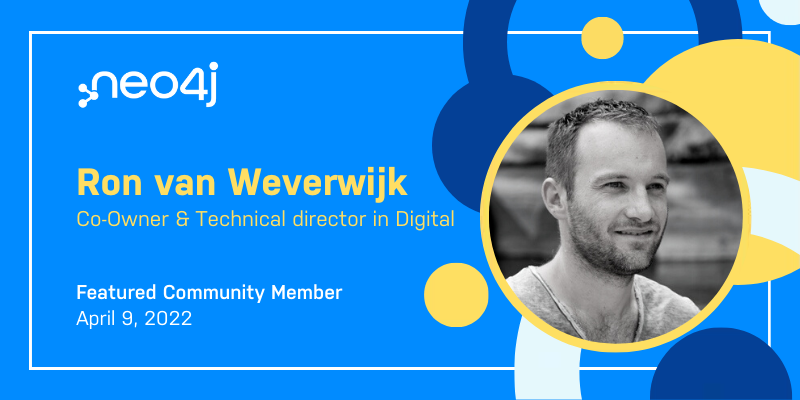FEATURED COMMUNITY MEMBER: Ron van Weverwijk

KNOWLEDGE GRAPH: Solving Wicked Space Problems With ASTRIAGraph
Moriba Jah leads a transdisciplinary research program in space safety, security, and sustainability at the University of Texas at Austin. He discusses ASTRIAGraph and its interesting use of a knowledge graph to help solve the problem of space junk.GOING META – Ep 3: Controlling the Shape of your Graph With SHACL
In this third episode, Jesús Barrasa looks at how to keep the structure of a graph using a W3C standard called SHACL (Shape Constraint Language). SHACL is becoming quite popular as a framework to enhance data semantics. He explains the SHACL framework and demonstrates an example of it using Neo4j’s platform.VIDEO: Discover Neo4j AuraDB Free With Michael and Adam
UNDER THE HOOD: The Multiple Faces of Complexity
Scalability brings significant challenges to graph databases, whether it’s data volume or resource utilization. In this new video, Chris Gioran explores how to reframe this complexity in a more useful way and looks at sources and patterns to show how it manifests in graphs.VISUALIZATION: The Message Flow Between Business Functions With Vaadin and Neo4j
Since business functions and messages are related to each other, it made sense to represent them as a graph, explains Simon Martinelli. He used the Vaadin framework to manage and visualize the graph and Spring Data Neo4j for easy access to Neo4j.TWEET OF THE WEEK: @GuyClapperton
Don’t forget to retweet it if you liked it!Here’s the current episode of the #nearfuturist interview podcast: Space Garbage – how much crap are we leaving in orbit? Prof. Moriba Jah discusses with Guy Clapperton here: https://t.co/fT5dNeNSFH transcript is here: https://t.co/yF8WrRxoxg
— Guy Clapperton (@GuyClapperton) April 6, 2022



